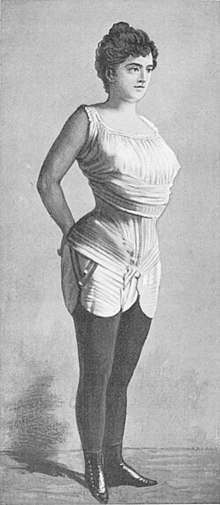Asia Sexiest Girls 048
Undergarment reform
Reformers turned their attention to undergarments, which could be modified without attracting ridicule. Physician Alice Bunker Stockham railed against the corset and said of the pregnancy corset, "The Best pregnancy corset is no corset at all." [1] The "emancipation union under flannel" was first sold in America in 1868. It combined a waist (shirt) and drawers (leggings) in the form we now know as the union suit. While first designed for women, the union suit was also adopted by men. Indeed, it is still sold and worn today, by both men and women, as winter underclothing.
In 1878, a German professor named Gustav Jaeger published a book claiming that only clothing made of animal hair, such as wool, promoted health. A British accountant named Lewis Tomalin translated the book, then opened a shop selling Dr Jaeger’s Sanitary Woollen System, including knitted wool union suits. These were soon called "Jaegers"; they were widely popular.
Dress reformers also promoted the emancipation waist, or emancipation bodice, as a replacement for the corset. The emancipation bodice was a tight sleeveless vest, buttoning up the front, with rows of buttons along the bottom to which could be attached petticoats and skirt. The entire torso would support the weight of the petticoats and skirt, not just the waist (since the undesirability of hanging the entire weight of full skirts and petticoats from a constricted waist — rather than hanging the garments from the shoulders — was another point often discussed by dress reformers).[2] The bodices had to be fitted by a dressmaker; patterns could be ordered through the mail.
Source from : http://en.wikipedia.org/wiki









No comments:
Post a Comment